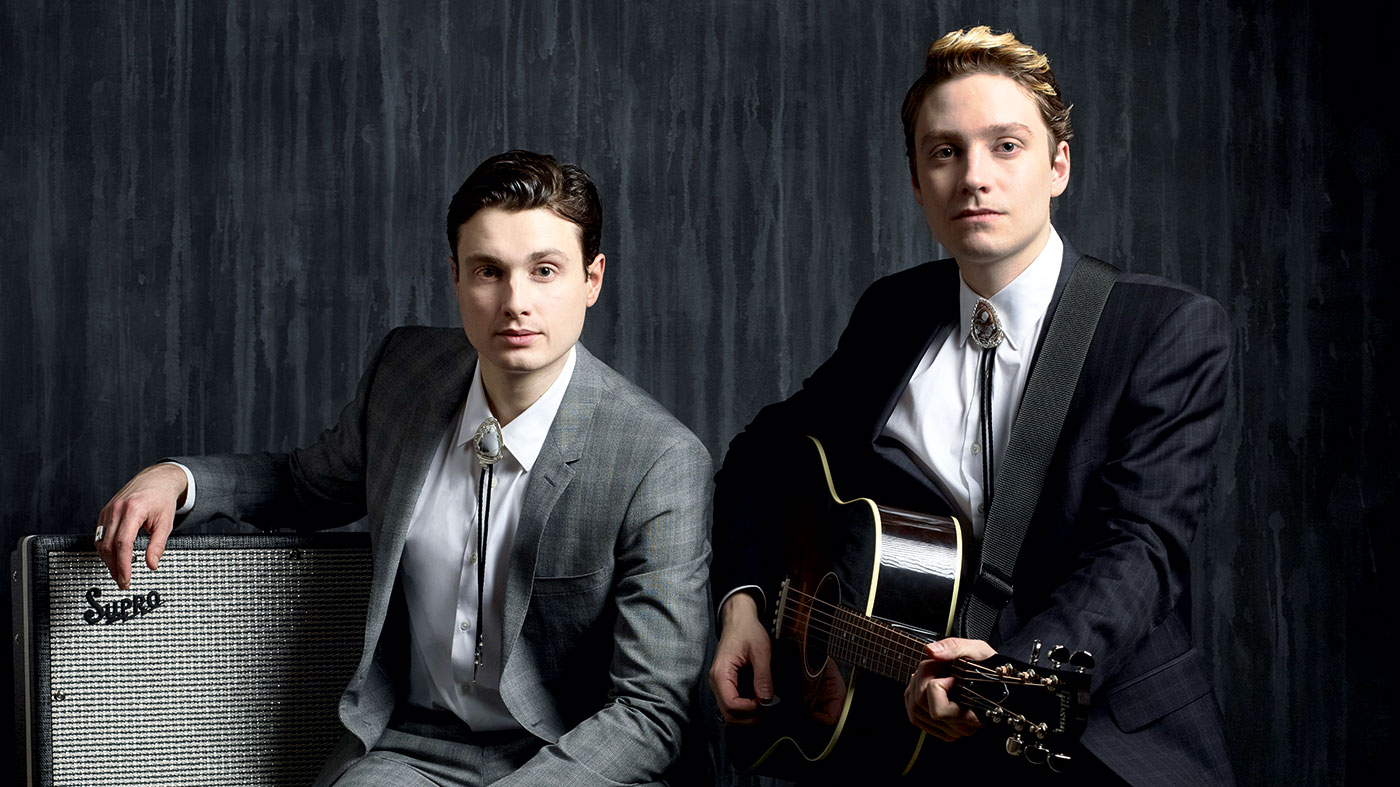Ruen Brothers: “With an acoustic guitar, it sounds like what it was built to sound like. There’s a continuity”
The UK duo on their rock 'n' roll debut, All My Shades Of Blue

From Roy Orbison to Rick Rubin, the Ruen Brothers’ rock ’n’ roll debut, All My Shades Of Blue channels greats past and present. And the acoustic forms the foundation...
The role of the acoustic guitar in rock ’n’ roll is underestimated. Rock’s origins in the 50s and 60s are dominated by the emergence of golden-era Gibson electrics and sunburst Strats, yet if we took a trip back to the smoke-clouded studios of Sun, Spector or the Brill building in that 15-20 year period, it would be the acoustic forming the backbone of rock and pop’s most iconic tracks.
Let us introduce you, then, to the Ruen Brothers, AKA Henry and Rupert Stansall. The Scunthorpe natives cut their teeth covering Everly Brothers and Roy Orbison in north east working men’s clubs, before their tanked-up take on classic rock ’n’ roll led to them signing to Universal in 2013. However, a long wait for a full-length followed and it took a change of management and a move to Ramseur Records to ensure that the debut album All My Shades Of Blue made it to shelves.
We tracked it with two or three acoustic guitars at a time and that’s how we started every song on the album
Produced by Rick Rubin at the producer’s Shangri La complex and featuring Chad Smith on drums, it’s a 34-minute triumph of retro-tinted songcraft and modern dynamism. And one that places the acoustic at the core of a contemporary rock ’n’ roll record.
“We’d always start by sitting in the garden at Shangri La with two acoustic guitars and playing the songs for Rick,” says Rupert of the 2014 sessions. “Then we’d go straight to tracking it, with me and Henry on acoustic guitars, along with a guy called Matt Sweeney. So we tracked it with two or three acoustic guitars at a time and that’s how we started every song on the album.”
“I think that was part of Rick’s idea,” continues Henry. “You get a thick wall of sound that creates a pad in the tracks.” That acoustic pad - so often overlooked in modern recordings - is what accounts for a major part of the body in Phil Spector’s famed ‘wall of sound’, not to mention the core of many of the most influential names in early rock history.
“If you look at any old photos, Elvis will be playing one, or Johnny Cash will be playing one, or Hank Williams or Willie Nelson, with his classical,” says Rupert. “It’s a similar principal in that you’re limited to almost one sound. If you choose an electric guitar, you can choose a tone that will come via the pickups, via the amps, via pedals. With an acoustic guitar, it sounds like what it was built to sound like. There’s a continuity across the album if you start with acoustic guitar.”
Want all the hottest music and gear news, reviews, deals, features and more, direct to your inbox? Sign up here.
Slick Rick
Rubin has become something of a guiding force for the brothers since meeting ahead of their initial sessions in 2014.
“When we first met Rick we were nervous - not gonna lie!” says Rupert. “We didn’t know that he wanted to make a record, we were just told that he wanted to meet us and hang out… He’s got quite a presence. His house has a beautiful view of the ocean. It’s very minimal. Which kind of translates to the recording experience at Shangri La in that, in the recording studio, there’s barely anything apart from music equipment. Just big, open spaces.”
Rick really liked the overdub process that we would go through at home on our demos
The experience, all white rooms, sea views and sunshine, was somewhat different from the brothers’ previous claustrophobic recording environs - their Scunthorpe bedroom and London bedsit. They had breakfast with Chet Faker. Lana Rey stopped by to play them a song. One day they turned up and Neil Young was wandering around the garden, apparently working in the former Bob Dylan tour bus-cum-mastering suite that sits in the grounds. (“That was… unusual”). Still, Rubin made it feel like home.
“Rick really liked the overdub process that we would go through at home on our demos,” continues Henry. “He said, ‘Hey, you guys don’t want an engineer finding the tone, you want to play with it yourselves.’”
“They very kindly set up a mini studio in the room that I was staying in,” adds Rupert. “It became the acoustic guitar room and we went to town on trying out all kinds of overdubs and things and going through the process that we had done at home in our bedroom in Scunthorpe, but now at Shangri La…”
Scunthorpe to Shangri La? It’s been quite a trip, and the record’s release is a significant waypoint. “It’s really a relief,” says Henry. “There are always high points and low points... Music is really what you want to make of it.”

A J-45 with Edge
The high-demand acoustic workhorse
Rick Rubin’s studio base Shangri La has a wall of fine acoustics to choose from. While Rupert used a blend of Gibsons for base parts and Martins for intricate moments, Henry bonded with a 60s J-45.
“I did predominantly all the tracking on that,” says Henry. “Gibson acoustics have this really thick tone. They sound round and full and they’re a good workhorse guitar. It was funny because we got kicked out of the studio for a week or so because U2 were in and we took a bunch of stuff with us and we took this J-45. We’d actually finished using it after a day or so and then we got told The Edge had requested that particular guitar, so it’s clearly a popular one at Shangri La!”
Matt is a freelance journalist who has spent the last decade interviewing musicians for the likes of Total Guitar, Guitarist, Guitar World, MusicRadar, NME.com, DJ Mag and Electronic Sound. In 2020, he launched CreativeMoney.co.uk, which aims to share the ideas that make creative lifestyles more sustainable. He plays guitar, but should not be allowed near your delay pedals.


